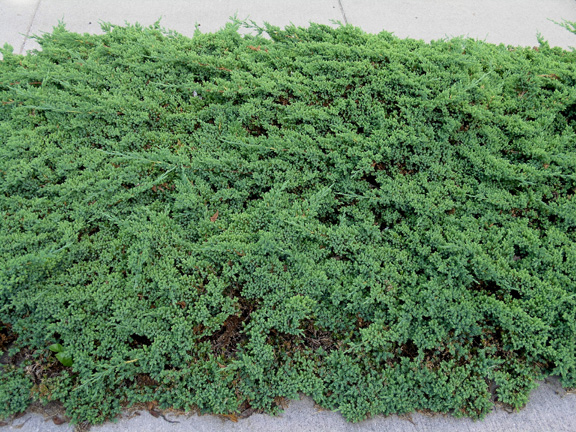| General Description | Excellent groundcover juniper for rock gardens, and provides winter interest in any garden. Can grow to be very wide spreading but is easily pruned and trained. Can also be easily grown in many types of soil, but requires full sun. |
| ID Characteristic | Needles are blue-green, sometimes with a greyish tinge, found in groups of three. Has stiff, low lying, and spreading procumbent branches. |
| Shape | Low lying, broad spreading, with procumbent growth. |
| Propagation | Propagated from cuttings, rooted under mist. Cuttings should be taken after several hard frosts, so any time before spring is acceptable. Can be done from seed, but is more difficult. |
| Cultivation | Plant in full sun. Will tolerate a wide variety of soils and drought, and is somewhat pH adaptable. |
| Pests | Phomopsis twig blight can be a problem, although they are relative pest and disease free. |
| Notable Specimens | The University of Western Ontario, London, Ontario. |
| Habitat | Native to Japan, often found in mountainous areas, in dry, rocky soil. |
| Bark/Stem Description | Reddish brown and slightly exfoliating. Not visible because of its dense foliage and thus has little aesthetic value |
| Leaf Description | Blue-green needles, nearly 1cm long, grouped in threes. |
| Flower Description | Dioecious species, bears small cone-like flowers in May or June. |
| Fruit Description | Small blue-black berries, 0.5cm in diameter, found only on female plants. Deer often eat them. |
| Colour Description | Blue-green, sometimes almost grey. Keeps colour throughout the year, sometimes with a purplish hue in winter. |
| Texture Description | Medium, fairly neutral in the landscape. |
